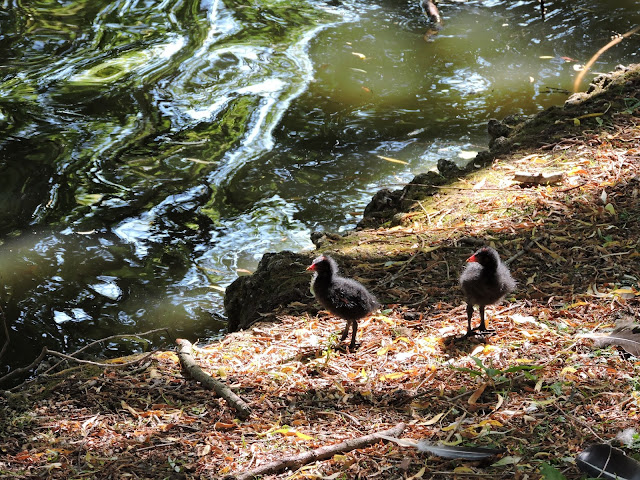Monday 8th June
I didn't have a huge amount of free time on Monday, so went to have a closer look at somewhere I spotted earlier in the week. May I present... The prettiest roundabout I've ever seen...
Tuesday 9th June
The light is always beautiful on the lake at sunset, but the sky somewhere between blue and purple along with the golden reflections on the water really struck me. And the yellow flag irises which surround lots of the lake almost seemed to glow in the dusk.
Black and white photography isn't something I've really done much of before (I enjoy bright colurs far too much usually) but I was inspired to after my phone camera, which was all I had with me at the time, couldn't handle the colour of these copper beech leaves.
I'm so pleased with how they worked out. Somehow it seemed to capture the way the light fell in patterns through the branches than my first lot of colour images. I love the way the leaves shadow and overlap each other.
They're not the best photos I've ever taken but it's reminded me that black and white photography is actually doable. While I'm going to keep to colour photos most of the time, it's definitely something I'll be coming back to!
Thursday 11th June
I went for a walk by the lake to see if I could catch up with the great crested grebes again. On the way I got distracted by these moorhen chicks. I think it might be the same family I saw last week as they were in the same place and looked about the right size, although obviously I could be wrong. They are certainly much more independent than the chicks I saw last week, calmly standing on the banks while the parents were a little way away, foraging. I loved the way they were stood in the beam of sunlight and how it made their down look almost halo-like.
I also managed to catch up with the grebes. This isn't the family I've been following (which had either two or three chicks, more on that in another post) but they also live on the university lake. This chick is a week or so younger (I'm not sure exactly when they hatched) and so was still being fed by a parent. It was almost comical to watch; the chick would chase the parent, squeaking incessantly and begging for food. The adult waited until the chick had almost caught up and then dived. The chick was left on the surface, looking around with a general air of confusion, until the adult resurfaced. Then the chick would charge towards it, squeaking, and the whole thing would begin again. Every so often, the adult would feed the chick, which made no effort to dive itself. I think it will still be a little while before this one is independent.
Friday 12th June
As I was walking back from visiting York I saw this plant. It was covered with what looked like cobweb, and when I looked closer I could see caterpillars and what looked like pupae. It's something that I've read about several times, but as far as I can remember never seen, certainly not to this extent. I did some googling after I got back to my flat, and I think they're either ermine moth caterpillars or tent caterpillars. However, like most insect things there are so many possibilities that I have absolutely no idea how to get any closer to identifying them. So, if you happen to know caterpillars, I'd love to hear your ideas! Sadly, this is the best photo I was able to get with my phone.
Saturday 13th June
It turned out to be mostly covered in aphids. While not the most exciting thing that you get on oak trees, aphids are far more interesting than they appear. They're a brilliant example of a symbiosis, producing honeydew which is eaten by ants that in turn guard the aphids from predators. Some also have a symbiotic relationship with the bacteria Buchnera aphidicola, which produces essential molecules which the aphids cannot synthesise or obtain from their food.
Their reproductive strategies also make aphids worth a second glance. Many species use a combination of sexual and asexual (or clonal) reproduction in order to achieve the rapid population growth which lets them exploit favourable conditions. Some even have telescoping generations, where an adult female has a daughter developing in her reproductive system which is herself already parthenogenitically producing her own daughters. So a single adult aphid can actually represent three generations. Enough to make the humble aphid worthy of a little more admiration in my opinion!
Sunday 14th June
Walking around campus I noticed that the hawthorn flowers which had been fading for several weeks had been replaced by elderflowers. This is always a real sign of summer for me as the hedgerows in my village, full of elders, are covered in flowers every June. Just like the first swallow, there is a wonderful optimism in these signs that the sunshine isn't far away.
So, that was week 2! Nothing as exciting as the tawny owl in the first week, sadly, but it was brilliant all the same. Week 3 will be up soon!
Alexandra xx















No comments:
Post a Comment